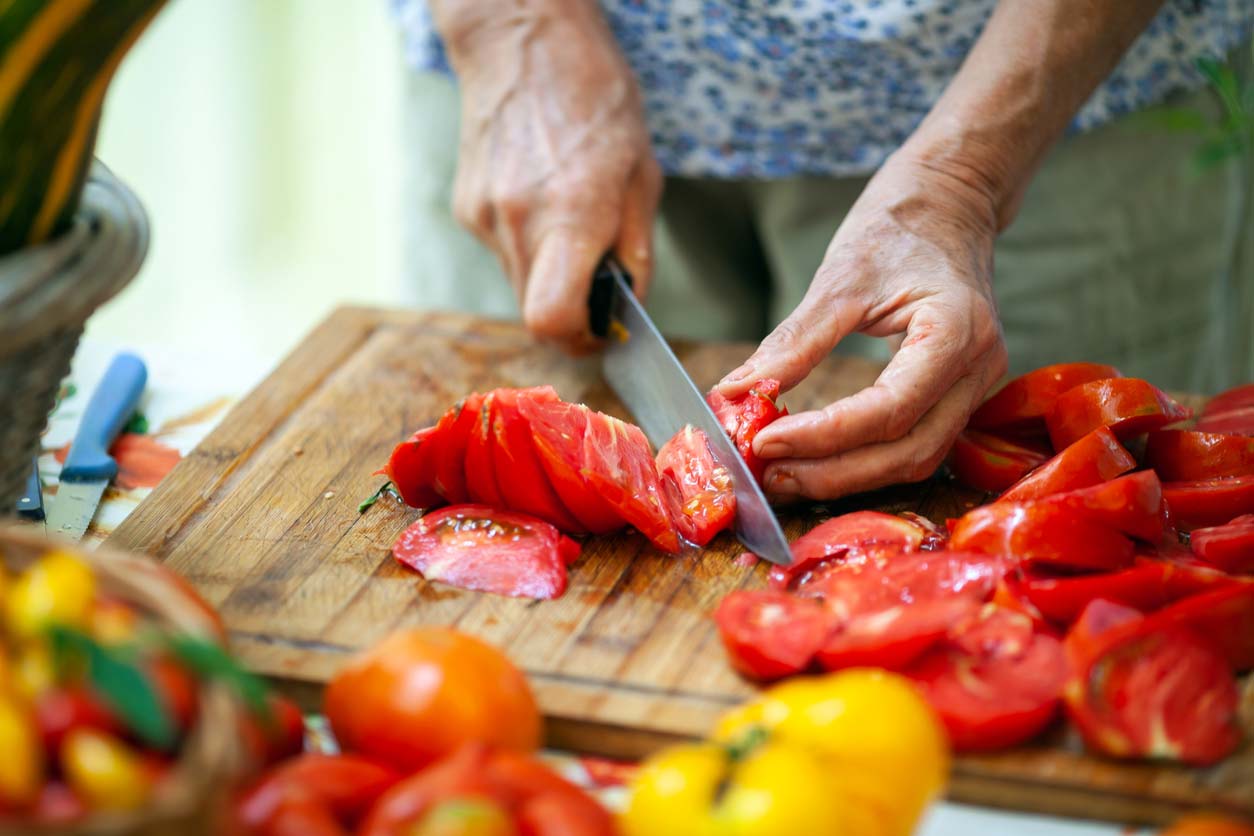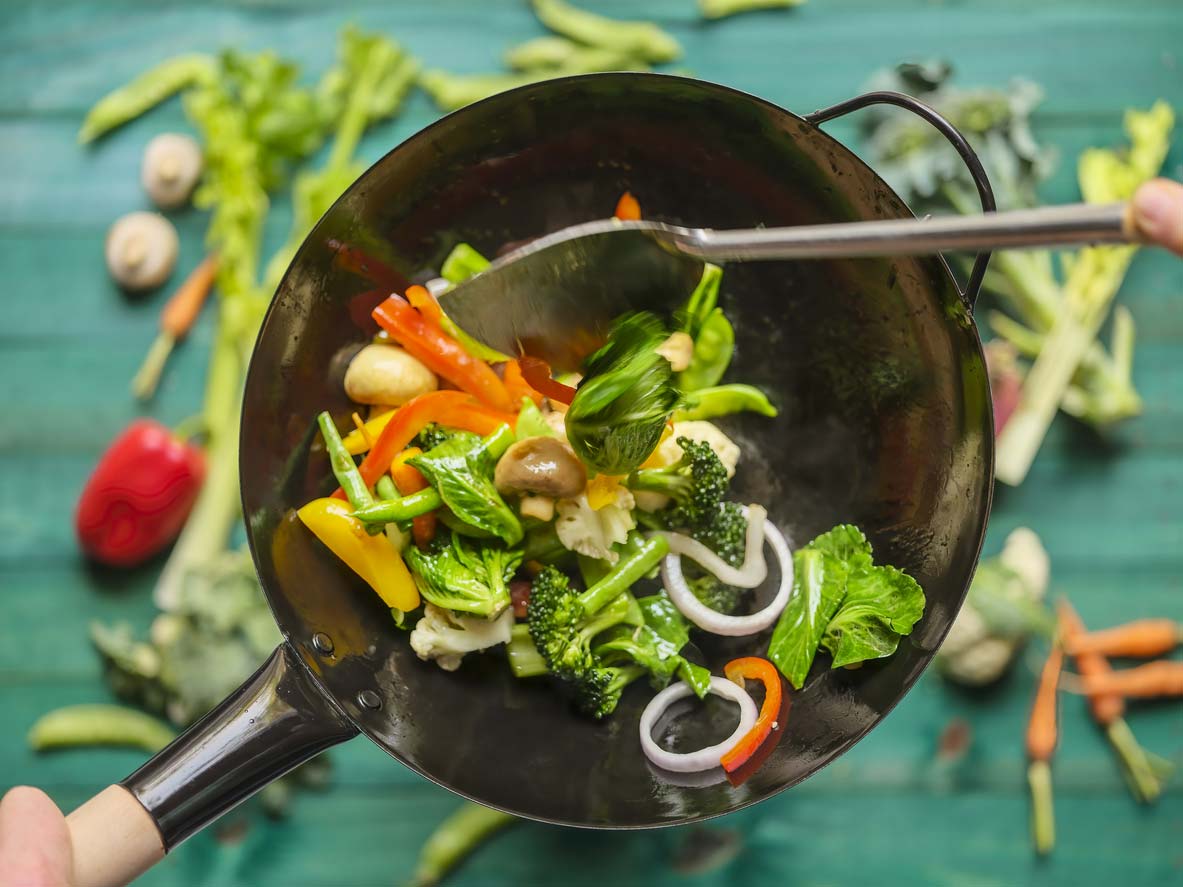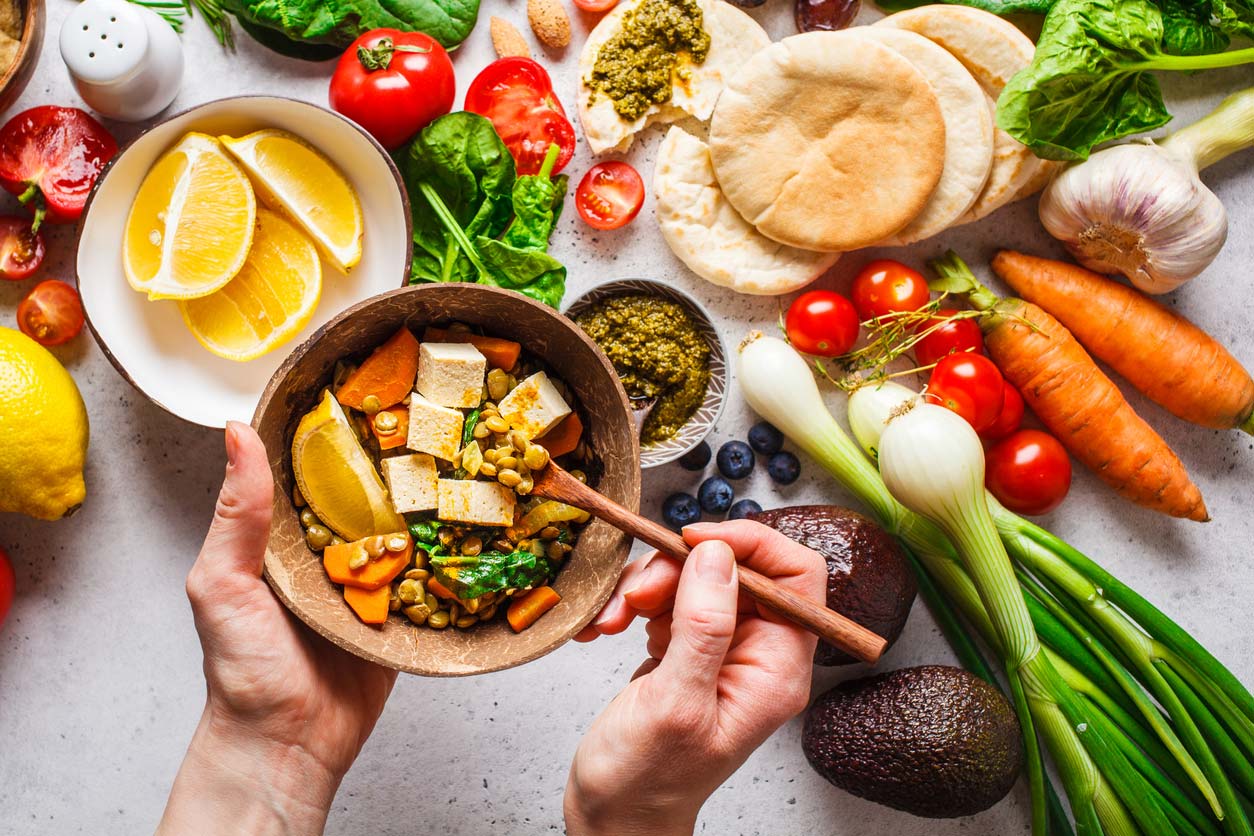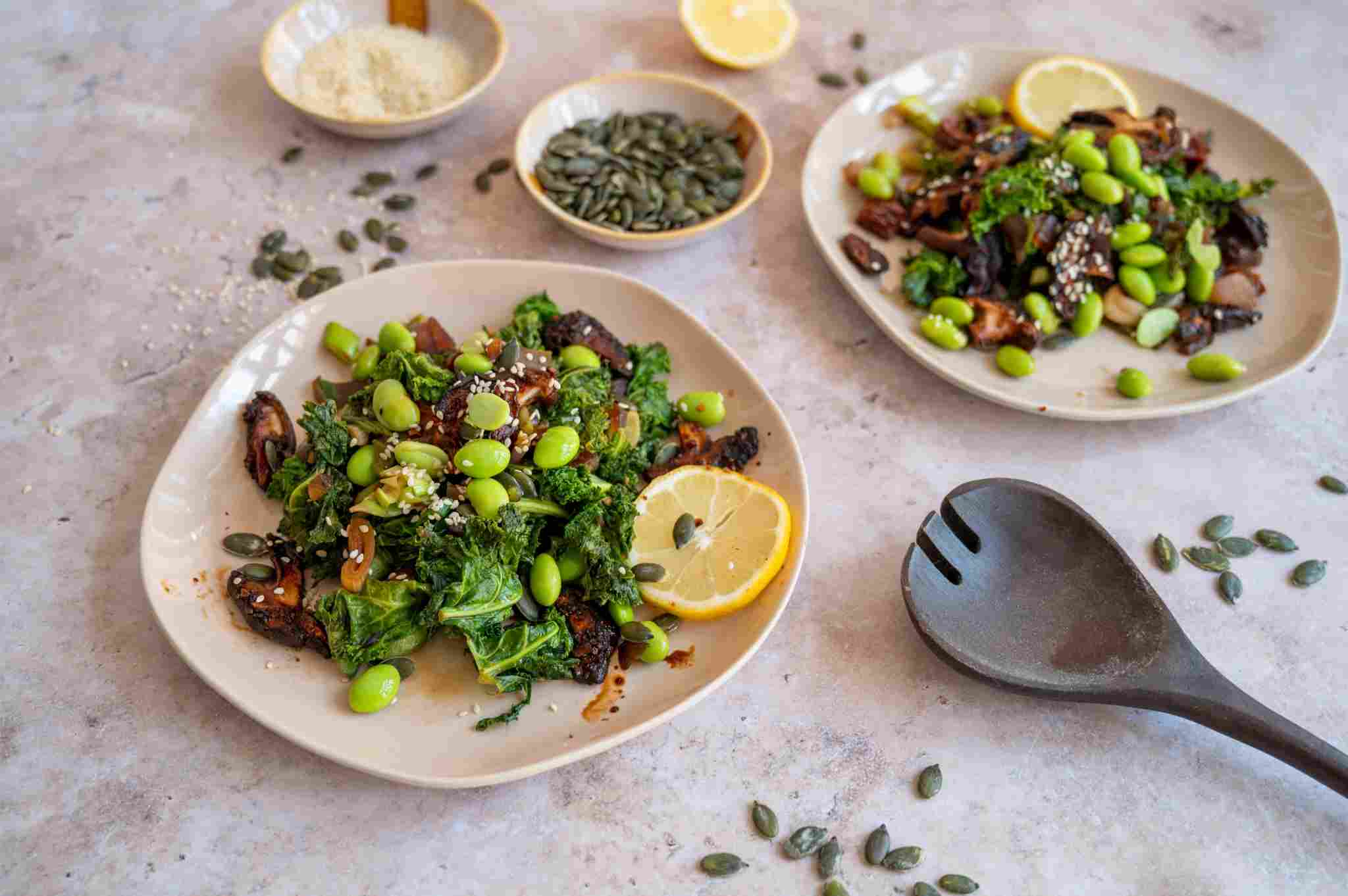According to the internet, some of the things people have swallowed — and have gone to the hospital to get extracted — include cell phones, fitness trackers, toothbrushes, SpongeBob pendants, and dentures.
This makes me question the saying, “You are what you eat.”
It’s got a ring of truth to it (especially if it’s a cell phone, haha), but here’s a more accurate statement: “You are what you digest.” After all, the person whose false teeth tipped down their gullet didn’t turn into a dental clinic.
And the converse is also true: Just because certain nutrients are abundant in a food doesn’t mean that your body will absorb them. If nutrients just go in one end and out the other, they don’t provide you with many benefits.
The good news is that there are specific ways to prepare and combine foods that can enhance nutrient bioavailability — that is, how easily your body can access and benefit from those nutrients.
And more good news: How your food is grown, as well as how long it takes to get to your kitchen counter, can also have a huge impact on nutritional quality.
In this article, we’ll look at various methods of food sourcing, preparation, and combining that can either maximize or impair nutrition.
Food Sourcing & Storage

This may be obvious, but food gets its nutrients from the sun, soil, and atmosphere. Many studies have shown that the same produce can have very different nutritional profiles depending on its “terroir,” which isn’t a scary word or a feisty little dog, but means the complete natural environment in which a plant grows. Even two peaches from the same tree can vary dramatically in their levels of beta-carotene, depending on which branch they grew on.
That complete natural environment also includes farming methods, including whether and which chemicals are used to fertilize the plants or protect them from pathogens and competition. Pesticides used in the growing season can reduce the food’s nutritional punch. And the residues that make it into your body can cause all kinds of health problems.
Organic Produce
To maximize the benefits of the plant foods you eat, look for organically grown, local produce whenever possible. Organic foods may have higher concentrations of nutrients, especially those all-important antioxidants. And they’re less likely to contain pesticides and pesticide residues.
Local Produce
Local produce, while it may not be organic, also has significant benefits. As the nutrient composition of fruits and veggies degrade after picking, local produce can be much fresher than the stuff that travels around the world in refrigerated ships, planes, and trucks. Also, since shelf-life isn’t the primary consideration, local growers can provide more unusual (and often highly nutritious and delicious) varieties of fruits and veggies that ripen quicker or bruise more easily than iceberg lettuce and tasteless tomatoes. And while some small farmers use season extension techniques like greenhouses, shade cloth, and high tunnels, most of the produce you’ll get from a local grower will be in season — another way to ensure maximal nutritional value.
Home-Grown Produce
Of course, the best, and certainly the most local, kind of produce is the kind you grow yourself or get from a neighbor with a green thumb. One possible “silver lining” of the pandemic is that it led to a dramatic revival in backyard gardening. For our article on how to start a food garden and take control of your food, click here.
Frozen Produce
Another high-quality source of nutritionally dense fruits and vegetables is your grocer’s freezer section. Frozen fruits and vegetables are picked at peak ripeness and then flash-frozen, which preserves their nutrients remarkably well. But do vitamins degrade in the freezer? Research published in the Journal of Agricultural and Food Chemistry in 2015 compared the nutritional content of foods that were frozen or refrigerated. For many vitamins, there was no difference. With the exception of beta-carotene, which degraded in the frozen produce, the vitamin levels in frozen foods were “comparable to and occasionally higher than” the fresh refrigerated ones. Of course, you can always grow your own or buy fresh produce and freeze it yourself. Here’s our helpful how-to article on food storage and preservation.
Food Preparation

How you prepare your fruits and veggies can also affect how much nutrition you get from them. It turns out that being a little rough on your produce can be a good thing. Cutting or chopping vegetables wounds their flesh, triggering a defensive reaction. The veggie releases polyphenols to prevent further damage.
To understand why this works, it’s helpful to think like a head of lettuce (I mean, it has a head, so it must think, right?). You’re hanging out in the ground, minding your own business, taking in some rays, and along comes a bunny rabbit who starts chomping you. What are you going to do?
You can’t run away (darn roots!). You can’t hide, and you can’t fight back. But you can make yourself taste bitter, so Flopsy decides that some other leafy green will be a much more pleasant meal. Many plants, including not just lettuce but also celery, parsnip, and others, pump out polyphenols when cut, which not only deter rabbits but can, remarkably enough, help protect humans from heart disease, type 2 diabetes, and some cancers.
Foods with high concentrations of vitamin C should be eaten right after cutting, because polyphenols can bind to vitamin C and use it up before it reaches our tissues.
The Benefit of Preparing Alliums
Another class of foods that loves us more when we crush it is the alliums (think onions, garlic, and leeks), which contain strong-smelling organosulfur compounds. It’s much better to chop or crush garlic than to eat it whole (not that you were considering popping them like candy) because the damage to the bulb releases an enzyme called allicin, which has the nasty habit of putting an Elvis Costello song into my head every time I read the word. This enzyme turns the garlic into a nutrient factory in overdrive, releasing copious amounts of health-promoting chemicals for our benefit. Onions also release pungent organosulfur compounds when their cell walls are broken, which is why chopping them can make us cry.
But here’s a little-known fact about onions and garlic: After you cut or crush them, their nutritional power increases for the next 10 or so minutes. For maximum benefit, leave them alone for at least a few minutes after chopping or crushing before cooking with them or eating them raw.
Prepare Food by Fermentation
Fermenting is another way of increasing good nutrients in some foods. Well known for its ability to support the spread of probiotic microbes, it has the added benefit of reducing phytates. That’s a victory for nutritional bioavailability, as phytates can inhibit the absorption of certain minerals. In 2018, researchers working to improve nutritional outcomes in sub-Saharan Africa discovered that fermentation increased enzyme activity in cereal grains and legumes. That made nutrients more available for human uptake.
Also, antioxidant properties of fermented foods are higher than their unfermented counterparts due to increased vitamin C activity. (Here’s our article on the benefits of fermentation, along with some easy-to-follow instructions to get started with sauerkraut and plant-based yogurt.)
Soaking Grains and Legumes
That same 2018 African study found that soaking grains and legumes initiates germination and reduces their phytate content, both of which increase the bioavailability of their nutrients. Beans are already health-promoting superstars; they’re one of the foods most strongly associated with longevity. Soaking them so they begin to germinate makes them even more nutritionally potent.
Prepare Nutritious Meals by Sprouting
The health food movement has touted sprouting (say “touted sprouting” five times fast) for many decades. We’re starting to see the science to support some of the claims of sprouting advocates. A comprehensive 2019 review of the science of sprouted grains appeared in Nutrients Journal. It included the fascinating bit of information that fruit flies given supplemental wheatgrass shots lived, on average, 6 days longer than their cousins in the wheatgrass-deprived control group. I doubt the same effect occurs in humans, but if it did, it would add about 9 years to our life expectancy.
Sprouted beans, grains, nuts, and seeds are more nutritious and digestible than their non-sprouted counterparts. They contain more fiber, and sprouted whole grains in particular are higher in protein. Also, sprouted foods trigger increased production of the neurotransmitter GABA, which plays a key role in regulating mood. Low GABA has been linked to both depressed and manic states. Here’s how to start growing your own sprouts. Whether you share your wheatgrass with your local fruit flies is totally up to you.
As a bonus, sprouted grains and beans are easier to digest and are less flatugenic, which is a wonderful vocabulary word that means they provide less musical inspiration to your hind quarters. Here are some instructions for soaking beans and grains for superior nutrient absorption.
Make Sure You Soak Your Rice
One grain in particular should be soaked before cooking. Rice, unfortunately, can contain high levels of arsenic, a Group A carcinogen and one of the worst pollutants found at Superfund sites. Even organic brown rice can contain worrying concentrations of arsenic. But studies show that soaking the rice in a particular way — which we share here — can remove much of the arsenic.
And here’s a fun fact about quinoa. It has a natural coating of saponins, which can deliver a slightly bitter, soapy taste and may cause an upset stomach. A quick rinse in a large strainer removes most of the saponins, making your quinoa taste a bit sweeter and less bitter. Of course, you can also soak it overnight, which delivers the added benefit of starting the germination process.
Raw or Cooked?

Whether raw or cooked food is healthier is one of the heated (ha!) debates in the healthy eating community. I’m happy to offer the definitive answer: Yes.
Some foods are more nutritious in their raw state, while others deliver more bioavailable nutrients after being heated. For this discussion, we’ll stick to high-level principles. (If you want a deep dive on the topic, click here.)
One of the most powerful cancer-preventing and cancer-fighting nutrients is sulforaphane, which you can get from raw cruciferous vegetables like broccoli, cabbage, and the heavyweight sulforaphane champion, broccoli sprouts. To activate sulforaphane, the vegetable’s cell walls must be broken by cutting, chopping, or chewing to allow an enzyme called myrosinase to convert the precursor compound glucoraphanin into sulforaphane. This enzyme is sensitive to heat, so raw or lightly cooked forms are generally best for maximizing sulforaphane production.
So that does mean you should never eat steamed broccoli or stir-fried cabbage? Not at all. Here are a few hacks to get your cooked cruciferous friends’ sulforaphane levels to rival their raw state.
First, sprinkle some powdered mustard seeds over your cooked broccoli. Even a small amount delivers enough myrosinase to activate the sulforaphane. Second, combine your cooked crucifers with a little shredded raw cabbage. Third, if you plan ahead, you can use Dr. Greger’s “hack and hold” technique: Cut the veggies 40 minutes or more before cooking, then heat them to your heart’s content without destroying the sulforaphane. And fourth, you can mix a few raw arugula leaves into your cooked (cabbage family) veggies.
Foods high in water-soluble B vitamins and vitamin C, like leafy greens, broccoli, citrus fruits, sweet potatoes, and tomatoes, retain the most nutrients when eaten raw or added at the very end of cooking. Heat will draw out the water from these fruits and veggies, and with that water, many of the water-soluble vitamins. A 2017 study out of Korea found that boiled and steamed chard retained absolutely no vitamin C. Zero. So if you do steam or boil your greens and other B- and C-rich foods, it’s wise to do so in a soup or stew, or save the broth or water for later use to keep from pouring vitamins down the drain.
On the other hand, fat-soluble vitamins such as A, D, E, and K are best eaten cooked. These nutrients actually stabilize when cooked, and in some cases, become more bioavailable.
And it’s not just fat-soluble vitamins. Certain antioxidants, like lycopene in tomatoes, actually become more potent when cooked, making that simmered marinara or tomato soup not just comforting, but also deeply nourishing.
Nutrient & Food Combining

There are a lot of ideas about food combining out there, and most are completely unsupported by science. For example, vegetarians don’t need to pair beans and grains at every meal to equal the supposedly “perfect protein” profile of an egg. And you aren’t going to confuse your digestive system by combining fruits with vegetables. You are also permitted to drink some water with meals; it won’t dilute your stomach’s digestive juices to the point of impairment in quantities less than an entire quart or liter.
But some principles of food combining are valid, and following them will help you increase the absorption of key nutrients.
So let’s talk about which foods to pair with others for maximum nutritional benefit. We’ve already seen that powdered mustard seeds love cruciferous veggies, but that’s just the tip of the broccolini. Let’s examine how to increase the intake of iron, vitamin D, and other fat-soluble vitamins by smart combining.
Iron
To get enough iron, combine iron-rich foods like leafy greens, chickpeas, tofu, lentils, and oats with foods high in vitamin C. If you eat an exclusively plant-based diet, you’re getting the non-heme form of iron, which isn’t as bioavailable as the heme iron found in animal tissue. Vitamin C increases the absorption and bioavailability of iron in the body. Examples include lentil soup with a squeeze of lemon juice, cooked oats with fresh strawberries, and sauteed spinach with red peppers. There’s also some evidence that foods high in beta-carotene can also aid in nonheme iron absorption.
Garlic and onions also increase the availability of non-heme iron when eaten with iron-containing foods. No, I’m not going to give you a recipe for oatmeal with cinnamon and freshly sliced raw garlic on top. Now that I’ve said it, maybe it will be a viral TikTok sensation by next week! But you can benefit from this effect by eating savory grains with cooked or raw onion and garlic dishes.
There are also foods that inhibit iron absorption, including foods containing high concentrations of calcium (some leafy greens and soy foods), tannins (found in coffee and tea), and unsoaked grains or beans (there’s that phytate, back in action again).
Vitamin D
Vitamin D is one of the most important nutrients that many of us need more of. Since it’s produced by the body when sunlight hits the skin, people with mostly indoor lives are at risk of deficiency. It’s crucial for calcium absorption and is an important nutrient for our immune system health. Research has shown that low levels of vitamin D are associated with poor COVID-19 outcomes. Vitamin D is found in fatty fish, egg yolks, and (if they’ve been exposed to sunlight while growing) mushrooms. But for most people, direct sun exposure is the primary source of vitamin D, and it’s often not enough. So you may benefit from supplementation. (More on vitamin D and how much you need here.)
Vitamin D is a team player; it needs vitamins K1 and K2 to do its job of regulating calcium metabolism for bone and heart health. K2, in particular, seems to boost absorption of D. K2 is another nutrient that’s easy to be deficient in unless you’re a fan of natto. If you’re not familiar, natto is a fermented soybean dish that’s a breakfast staple in Japan, and provokes very strong opinions ranging from love to, well, not love.
Since these vitamins spend a lot of their time and energy shuttling calcium around the body, you want to make sure you’re getting sufficient calcium along with your D and Ks.
Fat-Soluable Vitamins
All fat-soluble vitamins, including A, D, E, and K, should be taken or eaten with a fat source for maximum absorption. Some foods that deliver these vitamins already contain fat, such as nuts and seeds. Other low-fat foods high in fat-soluble vitamins or their precursors (such as beta-carotene) should be combined with a fat source. So you can top your sweet potato with guacamole or drizzle a little extra virgin olive oil over your grilled bell peppers.
Best Recipes for Combining the Right Foods
One thing about food combining is that not only does it optimize nutrient absorption, but it also brings together flavors and textures — creating the most delicious combinations! Salads take on a whole new meaning with the Warm Kale Edamame Salad with Shiitake Bacon. The Mexican Bean Soup is packed with traditional Mexican ingredients to maximize iron absorption. The traditional Club Sandwich gets a major revision, making it environmentally friendly, healthy, and delicious. Bone building at its best comes with the vitamin D, K, and calcium packed Mushroom Pecan Burger. Finally, a sweet treat for all nutrient absorption, Pumpkin Chia Pudding gets a gold star for its iron, beta carotene, and vitamin D powers.
1. Warm Kale Edamame Salad with Shiitake Bacon

This could be called the “Bone-Building Bowl” — it’s absolutely packed with nutrients that support strong bones. Earthy kale is loaded with absorbable calcium and vitamin K. Edamame is rich in plant-based protein and calcium. Shiitake mushrooms could potentially have vitamin D (soak them in the sun for a bit to help them maximize their vitamin D potential). Enjoy this refreshing and flavorful salad knowing your skeleton will thank you!
2. Mexican Bean Soup
Did you know that you can maximize the absorption of iron simply by adding a variety of delicious and nutrient-dense ingredients to your recipes? It might not be something you think of as you’re creating recipes, but it’s something you probably already do every day.
For example, ingredients traditionally used in Mexican meals often include beans, tomatoes, peppers, and onions. Beans are packed with iron, and tomatoes and peppers are packed with vitamin C, which can increase iron absorption fivefold. Onions and other allium veggies like garlic and shallots can also increase iron absorption by up to seven times!
Finally, red and orange peppers have carotenoids, which can further increase iron absorption by up to three times. Now you have plenty to say when someone asks you how you get your iron from plant-based foods. Enjoy this flavorful Mexican soup as a side, an appetizer, or a full meal!
3. Club Sandwiches

Optimize both your iron and your beta-carotene absorption in one tasty club sandwich! The vitamin C in tomatoes helps to maximize the absorption of iron from the whole-grain bread and hummus (organic chickpeas!) while the healthy plant-based fats from sesame in the tahini maximize absorption of beta-carotene in the sweet potatoes. Did someone say healthy club sandwich? Sign us up!
4. Mushroom Pecan Burgers

Bone-building at its best — these burgers provide vitamin D from the mushrooms, calcium from the tahini, and vitamin K from the miso and parsley. Oh, and did we mention? They’re also unbelievably delicious with their irresistible umami flavor and great texture. Make extra and store them in the freezer so you have them for weeks to come!
5. Pumpkin Chia Pudding

This is a triple bonus when it comes to food combining. The iron absorption from the chia seeds is enhanced by the beta-carotene and vitamin C in the pumpkin. Bones are supported by the calcium in the chia seeds and vitamin D fortified plant-based milk (look for vitamin D and calcium-fortified in whichever milk you choose!). And, the omega-3 fatty acids in the chia help to optimize beta-carotene in the pumpkin. Talk about a nutrient-powered treat!
Boost Your Health with Food Combining & Preparation

By strategically preparing and combining foods, you can minimize the possibility of nutritional deficiencies while boosting your health. There are many ways to do this, but ultimately, what’s most important is to eat a wide variety of whole plant foods daily. If you’re eating the rainbow on a regular basis, you shouldn’t have to worry too much about the details. If you want that extra little bit of nutritional excellence, pick the strategies and combinations that are easiest and most delicious, and focus on the nutrients that matter most to you.
Tell us in the comments:
- What are your favorite healthy food combos?
- What’s one combination you’re going to try next?
- What’s one food you can source locally



